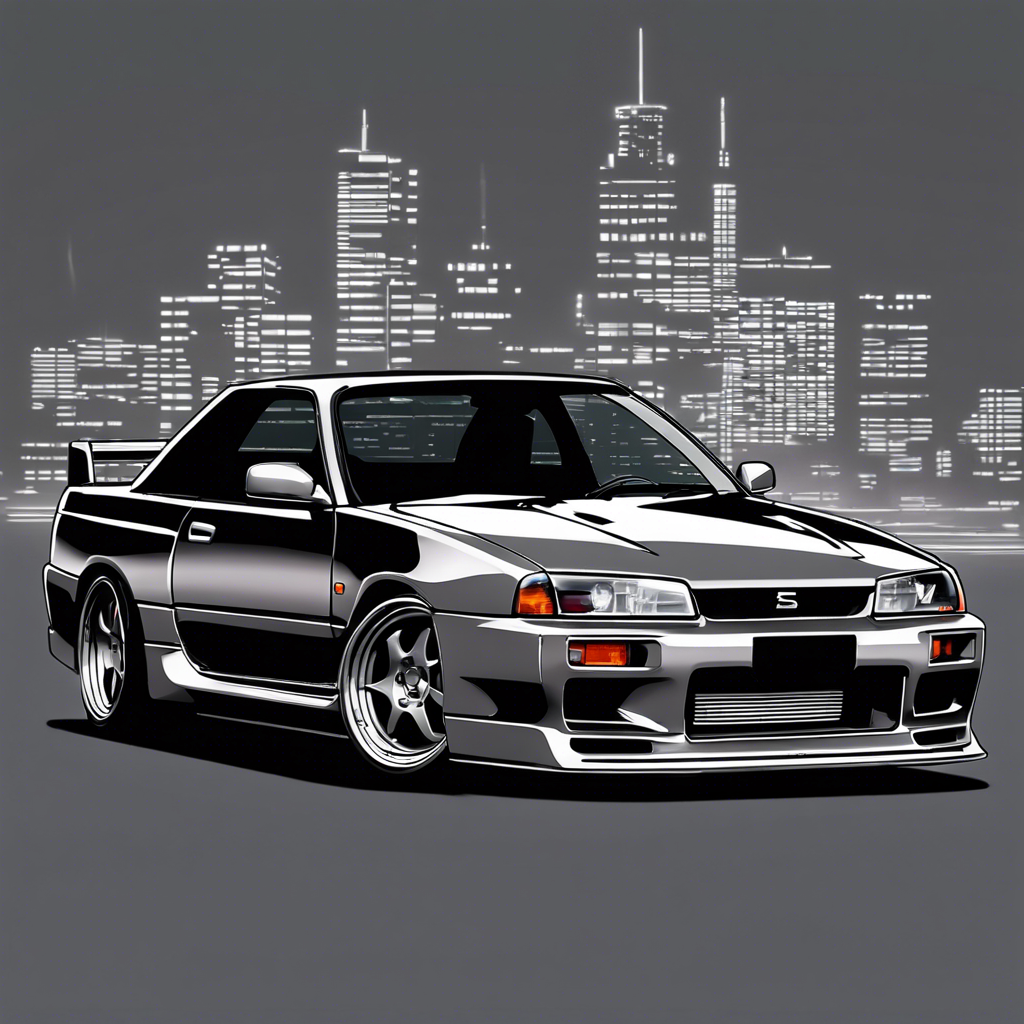The R32 Skyline: A Legend on Wheels
October 1, 2024

The Nissan Skyline series has long been celebrated by automotive enthusiasts, but among its lineup, the R32 Skyline stands out as a revolutionary model that transformed the image of Japanese performance cars. Introduced in 1989, the R32 Skyline GT-R not only redefined what a sports car could be but also established a legacy that continues to influence car culture around the globe. In this post, we will explore the history, engineering innovations, racing pedigree, and lasting impact of the R32 Skyline.

A Brief History
The R32 Skyline was part of the Nissan Skyline line, which began in 1957. However, the R32 model, produced from 1989 to 1994, marked a significant turning point in the series’ evolution. With its introduction, Nissan aimed to create a vehicle that would compete not just in the domestic market but also in global motorsport arenas.
Nissan’s engineers implemented significant upgrades in performance and handling while paying close attention to aerodynamics and weight distribution. The engineers’ goal was to create a car that excelled on the track and was also enjoyable for everyday driving. Hence, the R32 Skyline GT-R was born, equipped with features that set it apart from its predecessors.
Engineering Marvels
At the heart of the R32 lies the formidable RB26DETT engine, a 2.6-liter inline-six twin-turbocharged powerhouse that quickly became legendary. This engine is celebrated for its robustness and tuning potential, making it incredibly popular among car enthusiasts looking to modify and enhance their vehicles. With a stock output of around 280 horsepower and 368 Nm of torque, the RB26DETT provided strong performance straight off the production line.
One of the standout features of the R32 was its ATTESA E-TS (Advanced Total Traction Engineering System for All-Terrain) all-wheel-drive system. This cutting-edge technology allowed the car to excel in various driving conditions while enhancing its handling dynamics—offering a competitive edge on tracks and streets alike. Combined with the Super-HICAS (four-wheel steering system), the R32 could maneuver through tight corners with agility that belied its size.
The vehicle’s suspension system also deserves mention—featuring independent struts in both the front and rear, the R32 provided a smooth yet responsive ride, balancing comfort with precision. The chassis, known for its rigidity, allowed the car to maintain stability at high speeds, further enhancing the driving experience.
Racing Heritage

Nissan’s commitment to motorsport was a driving force behind the development of the R32 Skyline GT-R. In the early 1990s, the car became a dominant force in the Japanese Group A racing scene. It achieved unprecedented success, claiming numerous victories, including a legendary winning streak in the 1990 to 1992 Japan Touring Car Championship.
The R32 Skyline GT-R’s racing prowess was a result of its design, engineering, and Nissan’s dedication to innovation. The car’s almost flawless performance on the track earned it the nickname “Godzilla,” a reference to its ability to conquer everything in its path and a nod to the vehicle’s Australian racing successes. This title did not merely reflect its racing triumphs; it also symbolized the cultural impact the car had, transcending borders and resonating with enthusiasts worldwide.
Cultural Impact and Legacy
The legacy of the R32 Skyline goes far beyond its specifications and racing triumphs. In the automotive community, the R32 is revered not only as a performance icon but also as a cultural phenomenon. Its appearances in film and video games, particularly in the “Fast and Furious” franchise and the Gran Turismo series, have immortalized it in popular culture. These representations introduced the R32 to a new generation of car enthusiasts and solidified its status as an automotive legend.
Moreover, the Skyline GT-R has become an enduring symbol of Japanese automotive engineering and ingenuity. Its influence can be seen in various subsequent models, both Nissan and competitors, as many manufacturers attempted to capture the same essence—combining power, technology, and precision in a single vehicle.
As the years have progressed, the R32 Skyline has maintained its appeal, with enthusiasts around the world dedicating time and resources to restore, modify, and celebrate this iconic model. Its relatively affordable price point, compared to other classic performance cars, makes it accessible to a broader range of enthusiasts. Moreover, its tunability ensures that it will always find a place in the heart of the car community.
Conclusion
The R32 Skyline’s legacy is an intricate tapestry woven from performance, competition, and culture. It not only shattered preconceived notions of Japanese sports cars in its time but also created a blueprint for future generations of engineers and designers. The fusion of technology, design, and motorsport heritage has ensured that the R32 Skyline GT-R remains a beloved classic that continues to inspire automotive passion.
In summary, the R32 Skyline is much more than just a vehicle; it’s a symbol of an era in automotive history that champions innovation, performance, and cultural significance. As we look to the future, enthusiasts and collectors alike will continue to cherish and celebrate what makes the R32 such a remarkable piece of machinery and a cornerstone in the landscape of automotive excellence. Whether on the racetrack or cruising down the highway, the spirit of the R32 Skyline GT-R lives on, a true testament to Nissan’s engineering genius and the thrill of driving.